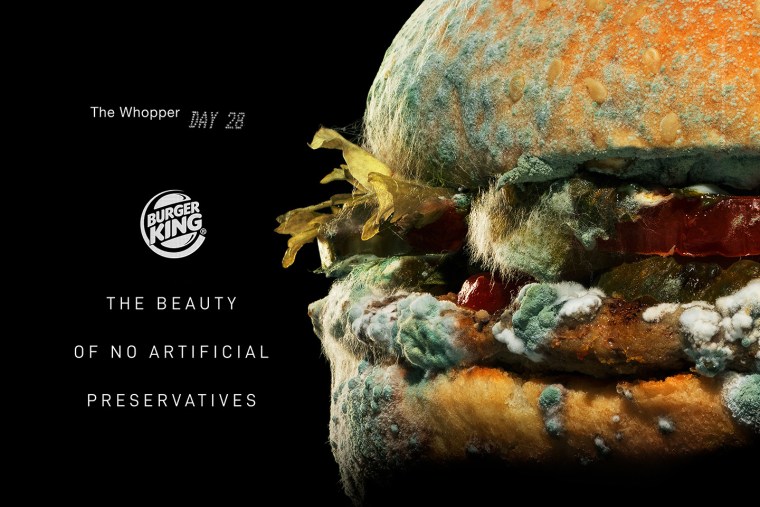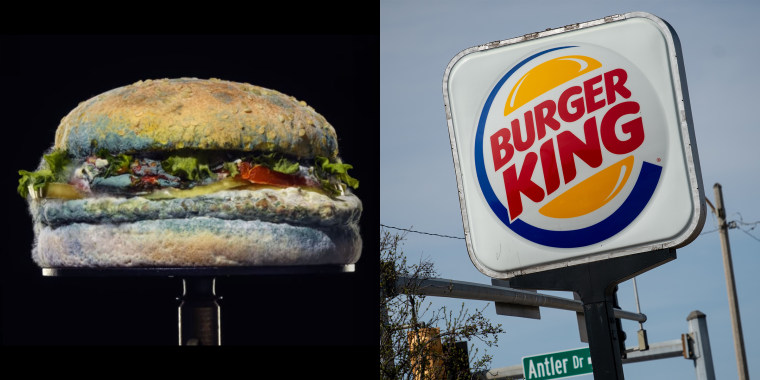If the people want real food, then Burger King will give them real food — even if it looks unappetizing.
As anyone who has ever forgotten about leftovers in the fridge knows, most things you can eat eventually grow moldy. But, as many viral photos and videos have shown, there are certain dishes that don't seem to age at all — and they're usually ones served at the country's most popular quick-service chains.
Breakfast sandwiches and juicy burgers from places like McDonald's, Starbucks and Burger King look delicious when first unwrapped but some, if left uneaten, continue looking that way for days ... or even months.
So what is this magical power these meals possess that other foods don't?
The answer is simple: preservatives.
On Wednesday, Burger King unveiled a new campaign featuring images of a moldy burger to announce it had removed artificial preservatives from Whoppers in many European and select U.S. markets.
A time-lapse video filmed for the initiative shows mold slowly taking over a Whopper that has supposedly been made without any chemicals and artificial preservatives. The end result is a fuzz-covered burger, splattered with green and gray growths, topped with wilted tomato and lettuce.
As the burger finishes decaying, the screen reads, "Mold can be a beautiful thing."

Burger King's new burger may be ugly, but it's trying to make a pretty important point about what's really in our food supply.
Over the last few years, consumer interests in ingredients that are organic, free of artificial dyes and preservatives have inspired popular chains to launch more menu overhauls and transparent food initiatives.
In 2015, Panera, which has always marketed itself as a healthier quick-service option, announced it would remove 150 artificial ingredients from its dishes. In 2018, McDonald’s removed artificial additives from seven classic burgers, a change that included tweaking its Big Mac sauce. In September, Chick-fil-A stopped serving meat raised with antibiotics at all of its 2,400 restaurants, fulfilling a promise it first made to customers in 2014.
The new Whopper recipe will replace the preservative sodium benzoate (which is used in the pickles), with lactic acid; remove a chemical known as EDTA (ethylenediaminetetraacetic acid) from the mayonnaise and replace calcium propionate in its buns with cultured wheat flour.
Still in its initial phase of ditching preservatives, Burger King has a long way to go before the people in its kingdom are feasting solely on "real" food.
While the chain has axed artificial colors and flavors from "its core menu sandwiches and sides," many, including a bunch of burgers, chicken dishes and breakfast items, still include hard-to-pronounce ingredients and the chain has not set any timeline for when (or if) its entire menu will be free of artificial extras.
The Whoppers that really can grow mold are currently only available at 400 stores throughout the U.S. Burger King currently has almost 9,000 American locations, so that's just 5% of locations. However, the chain says that the new, preservative-free Whopper will become the only Whopper option at all restaurants by the end of 2020.


